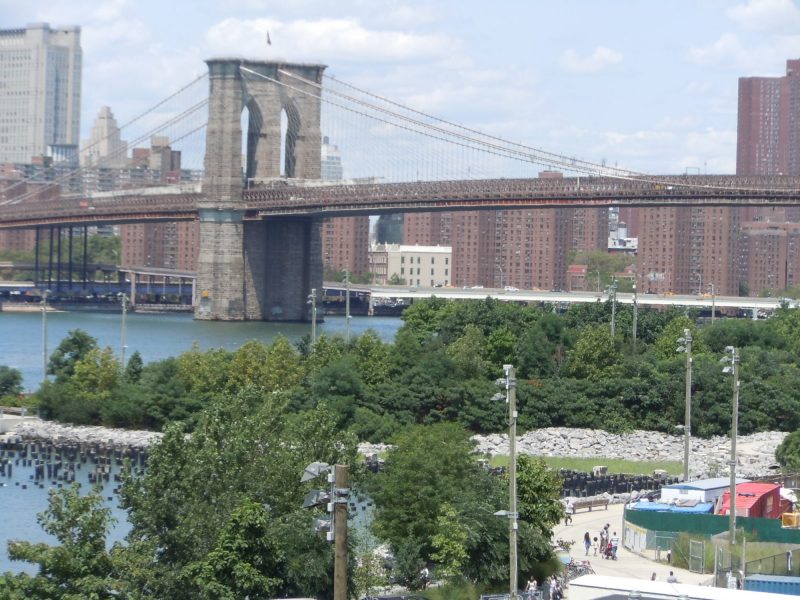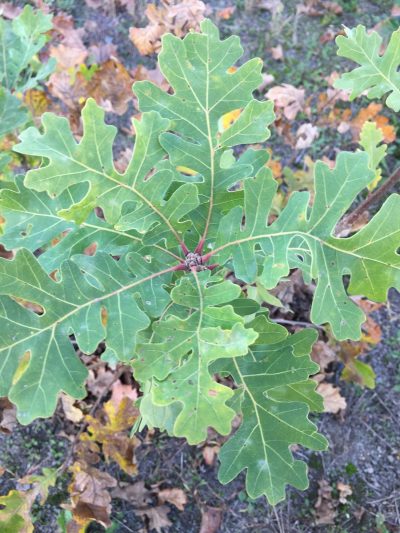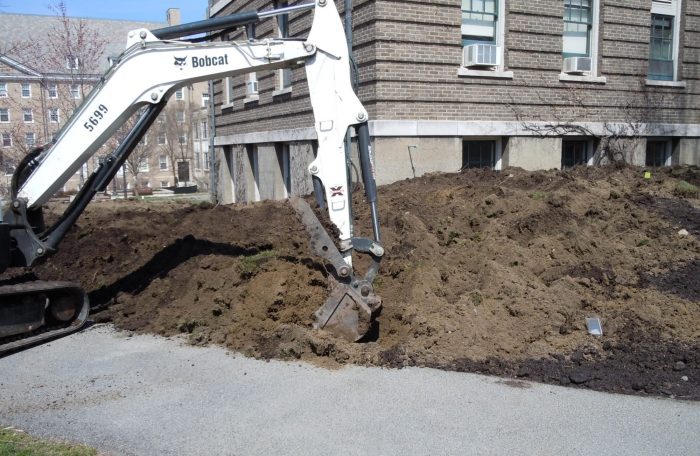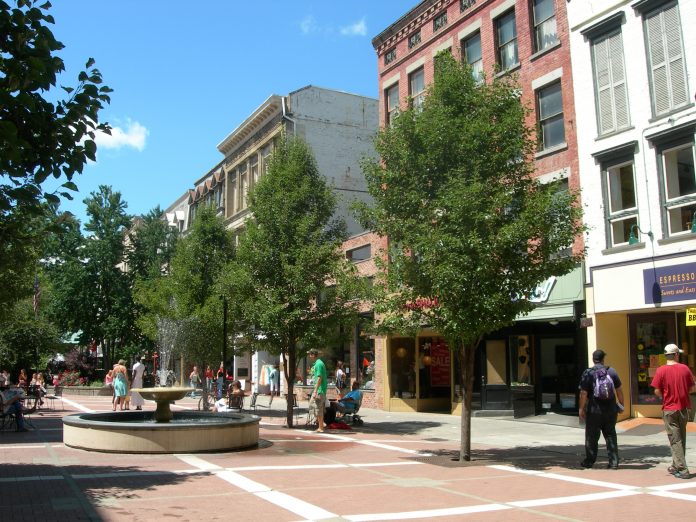What is the place of urban trees in modern cities? Dr Nina Bassuk from the School of Integrative Plant Science discusses their importance
Many cities are undertaking large tree planting programmes to meaningfully increase their urban tree canopies (NYC, Philadelphia, Chicago, LosAngeles, Beijing, etc.). While laudable in intent, it is critical that we make the most of these planting efforts by ensuring that trees can grow and thrive. Over half of the world’s population lives in cities. By 2050 it is estimated that two thirds of the population will live in urban areas. The quest to provide a livable urban environment requires juggling a multitude of services that feed, shelter and strive to provide a safe environment for urban dwellers.
Where do trees and other green spaces fit into this urban landscape?

Urban trees are indispensable features that make our cities livable. In the past 15 years, researchers in urban forestry (an oxymoron if there ever was one) have developed methods of quantifying the ecosystem benefits provided by urban trees. In our increasingly paved cities, tree services are essential. Trees cool the urban heat island; reduce energy use in winter by buffering winds. Trees mitigate stormwater runoff by intercepting rain in leaves, holding it in the soil and taking it up by plant roots; and stormwater is also filtered by the soil, preventing polluted water from entering lakes and streams. This ‘green infrastructure’, which is defined as multifunctional planted areas that provide economic, environmental and social benefits, reduces the need for and cost of traditional grey infrastructure such as storm drains and water filtration plants. Additionally, trees sequester carbon, help filter the air, reduce soil erosion, provide habitat for pollinators and other urban fauna, and provide places for people to recreate and reconnect with nature. There is increasing research showing that when people spend time in green landscapes they have an improved ability to learn, a better memory, and educed stress. As these ecosystem benefits become recognised it is essential to ensure that trees can grow to their envisioned size in order to provide the services we depend on.
The plant establishment process
Site Assessment
Thanks to many years of research, it is clear that poor practices in tree selection and soil preparation have reduced the potential benefits of planting urban trees. When a tree-planting project is envisioned, it is critical to assess site conditions to understand the constraints or opportunities for healthy tree growth. Site assessment ranges from the largescale (climate and rainfall) to the micro scale, where issues of reflected heat from built surfaces, soil degradation due to construction during development, and restricted rooting zones can be measured and evaluated. Without this clear pre-planting inventory of environmental conditions, the next steps of choosing the right tree and preparing or remediating soil will be uninformed and unfulfilled.
Tree selection
As our urban areas are so heterogeneous, not all trees will do well in all sites. However, the most ubiquitous constraint to healthy urban tree growth is soil compaction and limited accessible soil volume for roots, leading to stunted trees that cannot withstand increasingly hot and dry summers. I am often asked: ‘What is the best tree for my city?’ In fact, there are some widely adapted trees that do well in many urban areas. Trees such as the London plane, European linden, honey locust and black locust are widely planted in the Northern Hemisphere. Unfortunately, our reliance on these tried and true species and a desire for uniform rows of trees have caused significant problems. A lack of tree diversity in urban areas has contributed to the build-up of insects and diseases that decimate urban forests. With the advent of Dutch elm disease, the American elm (Ulmus americana) was all but eradicated. The American elm was a tough urban tree. It withstood flooding, drought, and a wide a ray of soil types, and also transplanted well. However, by over-planting this one species we encouraged the explosion of Dutch elm disease that wiped it out. With increased global trade, exotic insects and diseases move around the globe and can infect tree populations.

Clearly, a diverse urban tree population is essential for resilience in the face of some new insect or disease that may find its way into cities. Diverse and better urban trees For the last 30 years we’ve been working on oak propagation and hybridisation. Oaks are typically drought tolerant and long-lasting. There is also a great deal of variation in form because they naturally hybridise within certain sub-genera. In order to take advantage of the variation in oaks we first had to learn how to clone them. Oaks are produced from seed which gives rise to naturally variable offspring. Acorns from a particular tree would not necessarily look like the tree they came from. We developed a method to produce clonal oaks by cutting back the desirable plant almost to the ground. In the next growing season, shoots grow rom the cutback stump. These shoots are more easily rooted than shoots from a branch farther away from the roots. We also allowed these new shoots to initially grow out in the dark and treated them with a rooting hormone. Once this was done soil was mounded around the base of these shoots and, in time, the shoot bases produced roots. We then removed the rooted shoots from the original plant and started the process over again. Although this was successful, the replication process was slow. We are now working on a new method of clonal propagation using tissue culture, which should produce plants more rapidly. In addition to the propagation work we have hybridised oaks from more drought-resistant parents with our native oaks. These hybrids can be propagated and hold the promise of being much more drought tolerant and resistant to alkaline soils. Another way of testing the drought tolerance of these hybrids without waiting 20 years to see how they do in the landscape is to measure their ability to maintain physiological health and turgor in the face of drought using a vapor pressure osmometer. With this technique we take leaf samples and measure their ability to remain turgid even when exposed to dry conditions. This technique holds great promise in testing fewer common trees that haven’t been used in the urban landscape but that may be good candidates.
Improving urban soil

Another approach to increasing tree health in the urban environment is to improve that environment, which means soil remediation. We’ve worked on two approaches to improve the soil environment for urban trees. The first is to reduce the density of soil that has been inadvertently compacted during the construction process and the second is to develop a soil that can be compacted yet still allow tree roots to grow through it. Soil that underlays pavements and sidewalks must be compacted to bear the load of that pavement. Without load-bearing soil, the pavement would subside and fail. This necessary compaction often restricts root growth. We have developed a soil that can be compacted to bear the load of a pavement while being accessible to plant roots. We call this CU-Structural Soil. It is made from defined proportions of 2cm-sized crushed gravel and soil. The gravel/soil blend is created such that each piece of gravel touches another piece of gravel and the soil fills in the pores that are created. Because the gravel-to-gravel structure bears the compactive force above it, the soil within the gravel pores remains uncompacted. Roots quickly grow through the gravel pores, even though the entire mixture is compacted to engineering specifications for pavement construction. This structural soil has been used all over North America and in different forms in Europe and Asia. It addresses some of the most difficult conditions for tree growth when trees are planted in pavement. The other soil remediation technique we’ve developed is for soils that are not required to bear the load of a pavement, yet have been compacted inadvertently on a construction site. With this technique, compost of a specified type is laid over the compacted soil about 15cm deep. A bucket of a backhoe then digs down into the compacted soil about 45-60cm deep, scooping up the compacted soil and compost and then dropping it back on the ground. This action creates veins of compost within the clods of compacted soil. Trees are planted into this and then annually mulched with shredded bark to maintain the added organic matter. Over a 12-year period we have seen this remediated soil actually improve over time, allowing new landscapes to be created where none previously existed. If we value the benefits that trees provide we must support the work needed to improve tree growth in our inner cities. Selecting tough urban trees and increasing usable soil may fulfil our goals for a greener city.








